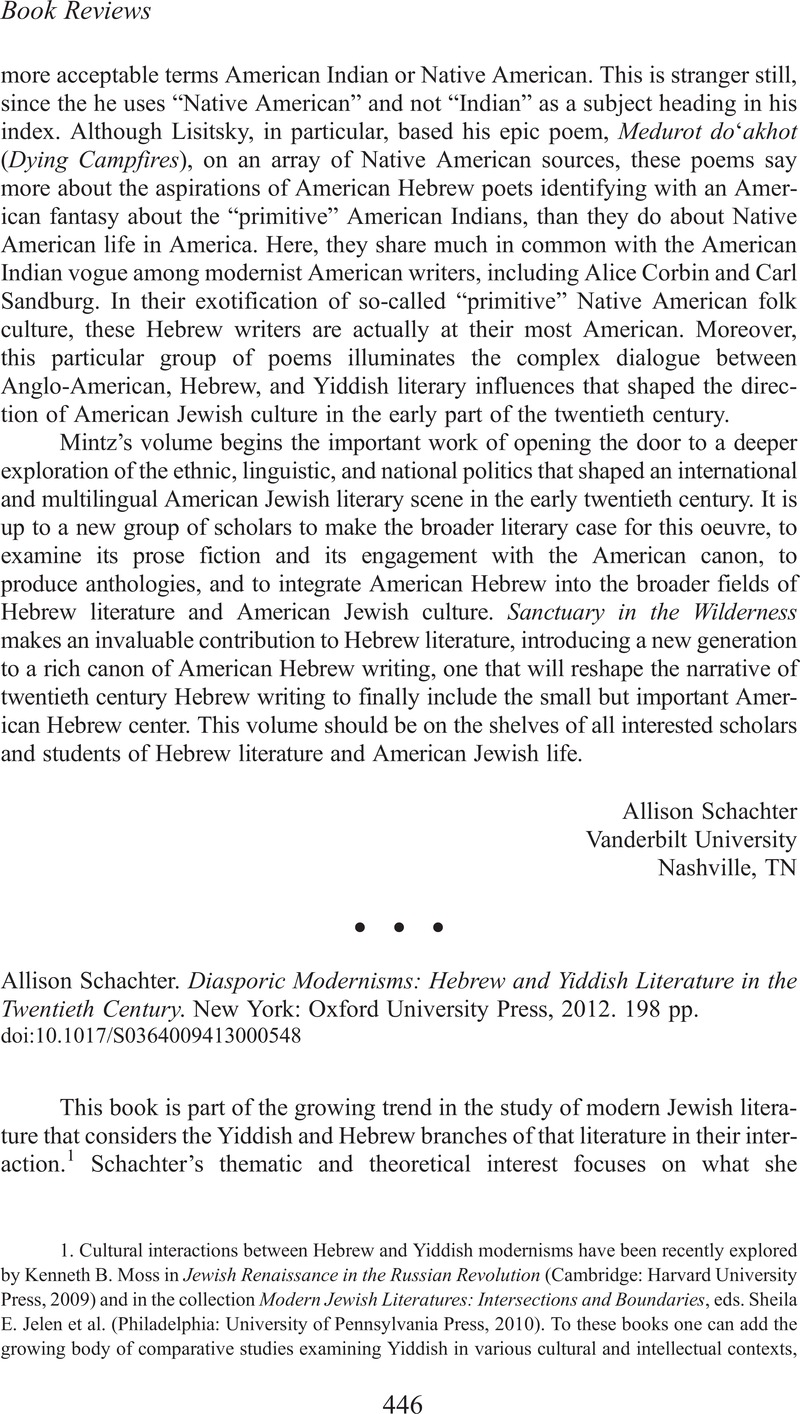No CrossRef data available.
Published online by Cambridge University Press: 19 December 2013

1. Cultural interactions between Hebrew and Yiddish modernisms have been recently explored by Moss, Kenneth B. in Jewish Renaissance in the Russian Revolution (Cambridge: Harvard University Press, 2009)CrossRefGoogle Scholar and in the collection Modern Jewish Literatures: Intersections and Boundaries, eds. Jelen, Sheila E. et al. (Philadelphia: University of Pennsylvania Press, 2010)Google Scholar. To these books one can add the growing body of comparative studies examining Yiddish in various cultural and intellectual contexts, such as Norich's, AnitaDiscovering Exile: Yiddish and Jewish American Culture during the Holocaust (Stanford: Stanford University Press, 2007)Google Scholar, Murav's, HarrietMusic from a Speeding Train: Jewish Literature in Post-Revolution Russia (Stanford: Stanford University Press, 2011)CrossRefGoogle Scholar, and Caplan's, MarcHow Strange the Change: Language, Temporality, and Narrative Form in Peripheral Modernisms (Stanford: Stanford University Press, 2011)CrossRefGoogle Scholar, as well as the three books by the Japanese scholar Yoshiji Hirose which deal with various aspects of the afterlife of Yiddish in American Jewish Literature (published in English by the Osaka Kyoiku Tosho Press).